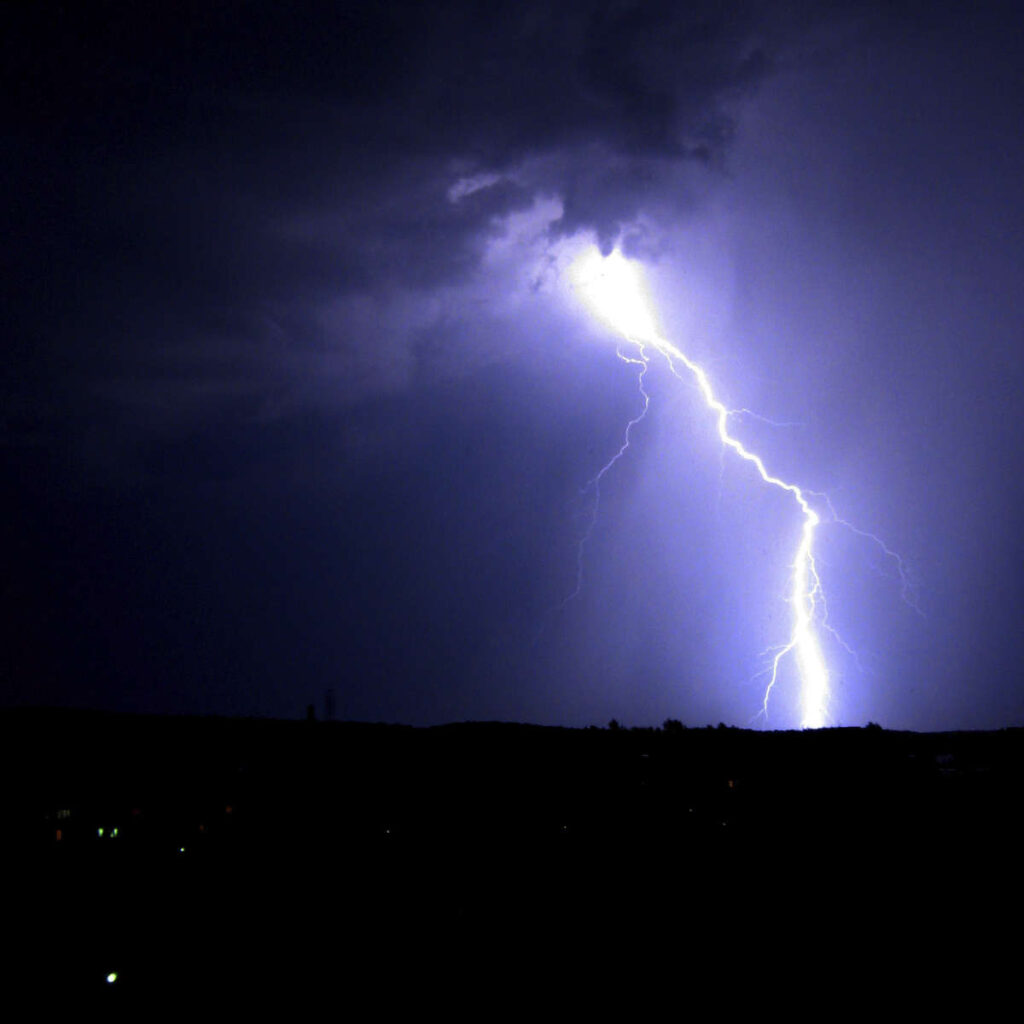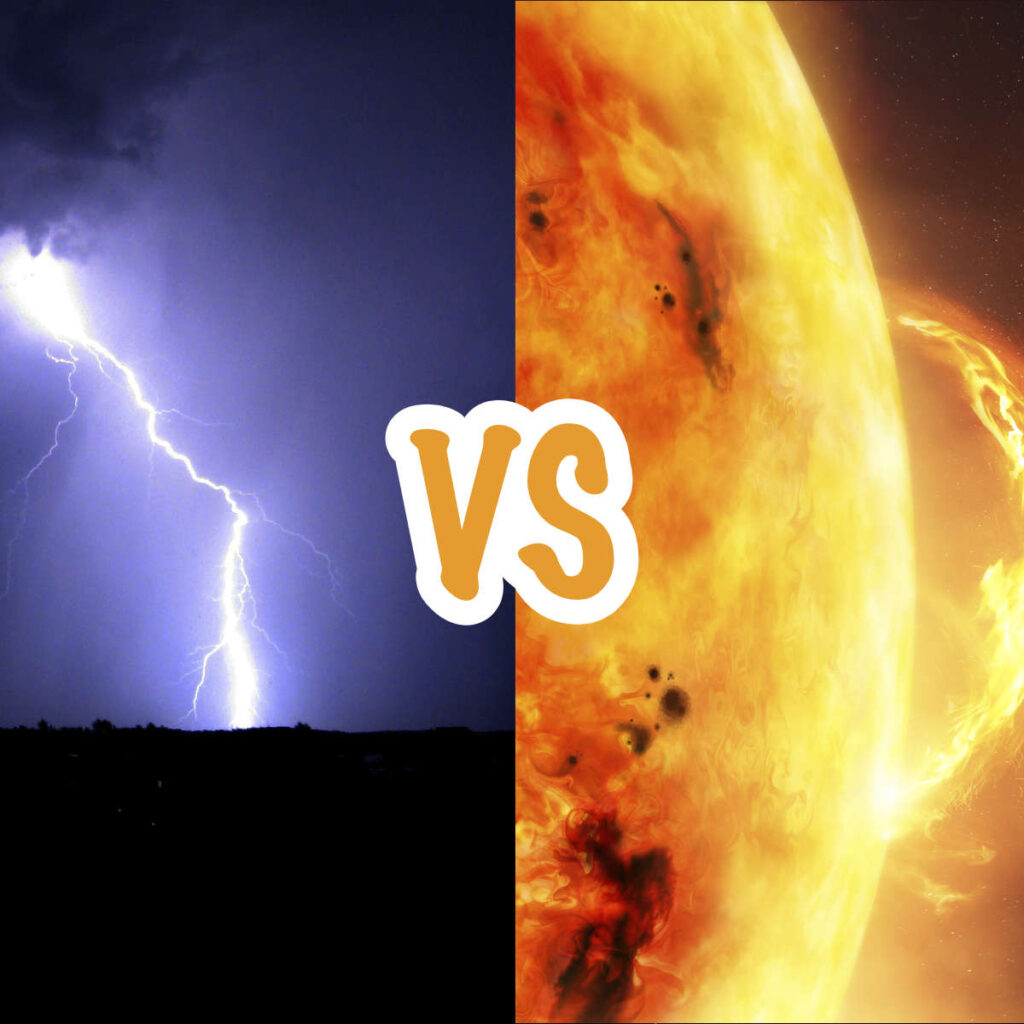Last Reviewed and Updated on June 26, 2022
Lightning is a sudden electrostatic discharge between a cloud and the ground, or between two different clouds in the sky. It is one of the most fascinating phenomena in nature so it isn’t surprising there are many amazing facts about lightning to discover.

1. Lightning can create a special type of rock
These rocks are called fulgurites. They are also commonly known as fossilized lightning. These tubular rocks can form when lightning hits just the right rocky ground, melting and fusing the rocks in lightning’s way.
Fulgurites form along the path of the lightning in the ground, so they can look like tree branches, and depending on the strength of the lightning, they can be either very small or quite impressive sizes.
Fulgurites aren’t rare, but they can be found worldwide.
2. It is hotter than the surface of the Sun
This is one of the most fascinating facts about lightning. The lightning itself doesn’t have a temperature but it heats up the air just around it. It can heat it up to over 50.000 degrees Fahrenheit / 27760 degrees Celsius.
The surface of the sun is almost 10 times colder.
Also read: is lightning hotter than sun for comparison of all temperatures.

3. The part of the lightning you mostly see goes from the ground up
Most bolts of lightning that touch the ground start off as less visible channels of electricity traveling from cloud to ground. This part is called the stepped leader.
When a part of the stepped leader reaches the ground it is followed by a return stroke, traveling from the ground to the sky, and this part of the lightning is the more luminous one.
4. Lake Maracaibo in Venezuela has the most lightning in the world
At this time, the weather conditions around Lake Macaribo in Venezuela are perfect for the formation of lightning storms. It is the lightning capital of the world, with most lightning strikes recorded in the area each year.
5. Lightning strikes aren’t exclusive to planet Earth
Lightning has been confirmed to occur both on Jupiter, Uranus, and Saturn, with super-bolts being common on Jupiter. There are possibilities of lightning occurring on other planets to but they haven’t been confirmed yet (as of 2022).
6. It can strike the same place twice
A popular myth, that a bolt of lightning can’t strike the same place twice is just that, a myth. High isolated objects and buildings are regularly hit by lightning.
The proverb “lightning doesn’t strike twice” is also a common one, meaning an unlikely unlucky event won’t happen to a person again. However, Roy Sullivan, a man who was struck by lightning seven times in his life probably wouldn’t agree with that. He isn’t the only person to be struck by lightning more than once. This is certainly one of the freakiest facts about lightning.
7. Thunder and lightning are two features of the same phenomena
Conversationally we use thunder and lightning interchangeably, but they are two different features of this phenomenon.
Lightning is electrical energy while thunder is sound energy. They both occur at the same time but you will see lightning before you hear thunder as light travels faster than sound does.
8. Lightning and thunder can shake houses
When the lightning strikes there is a sudden massive increase in temperature around it and this causes the pressure to increase. An increase beyond the atmospheric pressure will cause a rapid expansion of air, creating a shock wave.
9. Lightning isn’t common in winter
While thunderstorms are common during the spring, summer, and fall you don’t really see lightning during the winter. There is less instability in weather and less moisture which makes forming lightning storms much less likely.
10. Fear of lightning is called astraphobia
Fear of lightning is a common one. It is more common in children but is still present in many adults. Animals display this phobia too.
11. More than a billion lightning strikes hit Earth each year
Needless to say, that is a whole lot of lightning strikes.
12. Fulminology is the study of lightning
With lightning being one of the most common phenomena in nature, it comes as no surprise they are an object of study. Fulminology studies all things lightning.
13. Red lightning is a thing
When you see lightning you see something you would describe as white, maybe bluish-white. But rare phenomena can be observed when electric discharges occur high above thunderstorm clouds. This phenomenon can appear as orange-red flashes and are called sprites or red sprites.
14. Volcanic lightning is a thing as well
Your everyday lightning usually needs clouds and thunderstorms to form, but not always. Volcanic lightning is lightning that is caused by volcanic eruptions.
15. As is fire lightning
Fires that are big enough, can cause the formation of firestorm clouds and can cause lightning as well.
